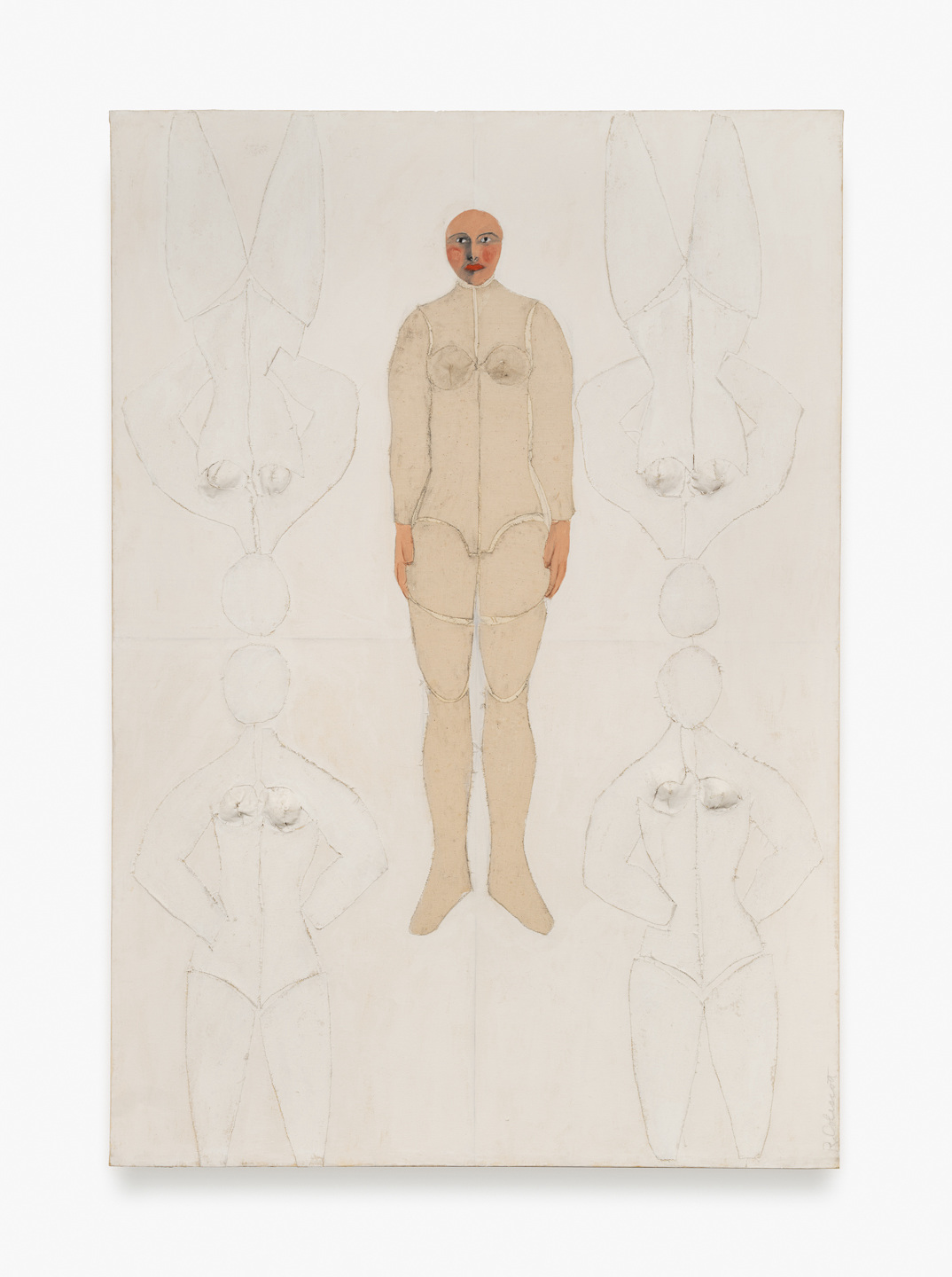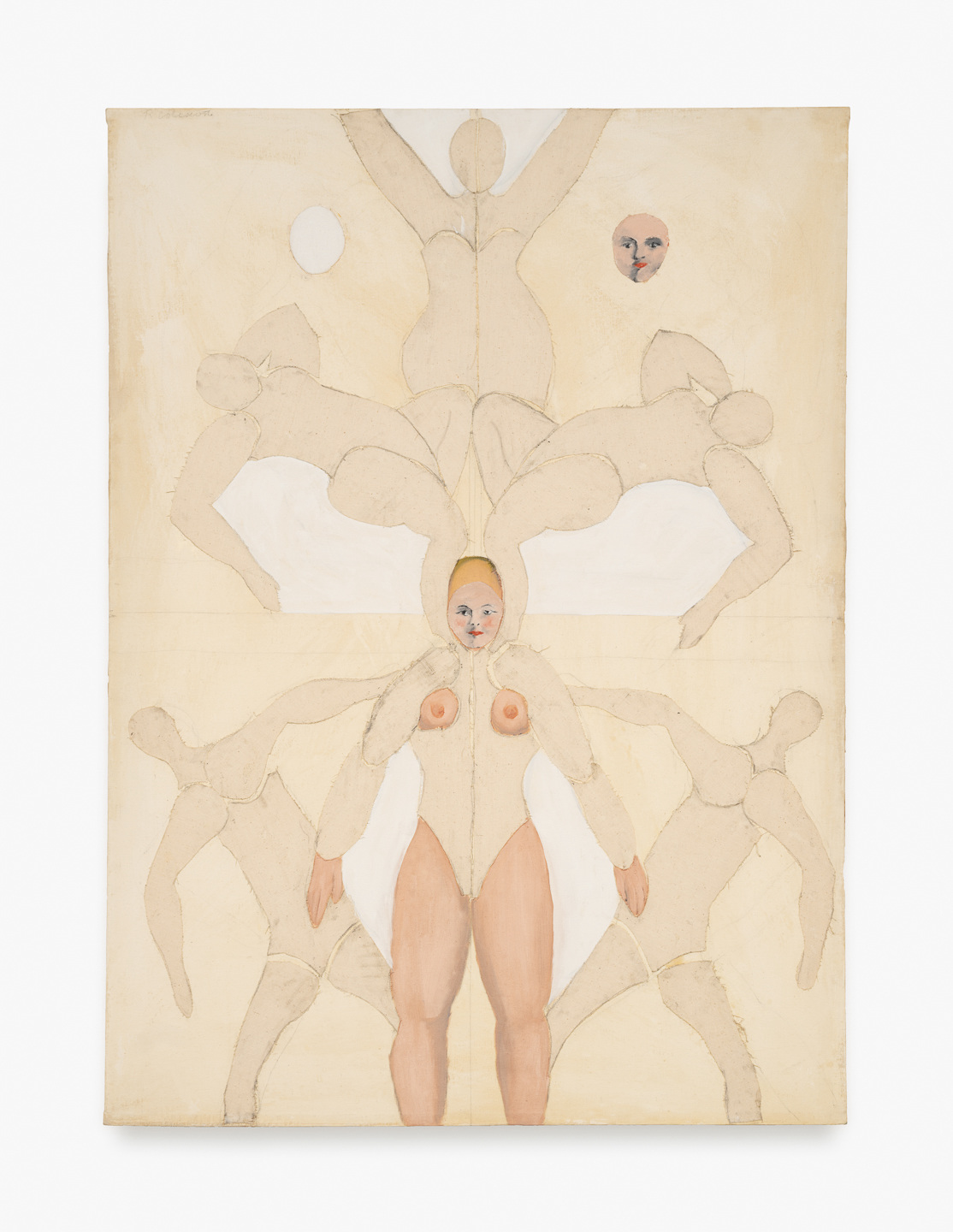In Old Crow on the Fence (1978), a blonde in a low-cut top and hot pants stands talking to a smoking crow—an anthropomorphized version of Robert Colescott himself. These archetypes are present throughout Colescott’s work: the sexualized white woman and the racially-charged Black man (in this case a direct reference to Jim Crow laws). The artist engaged these and other racially charged archetypes throughout his 60-year career, earning a reputation for making unflinching, satirical, and emotional paintings of American life. This month at Venus Over Manhattan, it is the artist’s exploration of gender in particular that is on display.

Here: Robert Colescott, There Are Two of Us, 1955. All images courtesy of The Robert H. Colescott Separate Property Trust and Venus Over Manhattan.
Though omnipresent in his work, representations of women—white women in particular—appeared to the gallery’s director, Anna Furney, as an underexplored theme in Colescott’s oeuvre. “You can see that the artist’s work undergoes a technical and stylistic evolution over the arc of his career, but the women as subject matter remain a constant. These women mature with his work: they become more incendiary, more present, more powerful,” she says.
"Robert Colescott: Women” spans the painter’s decades-long career, highlighting works that demonstrate his complex relationship with the female figure. As a self-described light-skinned Black man who often spoke about passing as white in a segregated society, the artist's work frequently focused on his complex feelings about race and his own identity. “He pushed the boundaries of good taste in order to make searing portraits of our history—both what is published in our history books and what is omitted. His art is prescient,” says Furney. Venus Over Manhattan’s exhibition comes on the heels of the traveling retrospective “Art and Race Matters: The Career of Robert Colescott,” interrogating these notions.

The new exhibition expands on Colescott’s study of Black masculinity, contrasting it with his portrayals of white womanhood. There Are Two of Us (1955), is an expressionist portrait of two racially ambiguous nude women. It was painted the same year Emmett Till was murdered for allegedly flirting with a white woman. In a later piece, Olympic Event (1972), a female runner races past a storyboard of imagery depicting sex between a white woman and Black man.


Furney is looking forward to sharing two other pieces in the exhibition. “FENCiNG WOMEN and IMAGINE ACROBATS, both from 1964, are radical paintings. These are dimensional, collaged canvases, an absolute discovery for me and incredible to see in person,” she says. The collages, layered with rough sketches of nude women, demonstrate Colescott’s long-standing commitment to representing heavy subject matter with brutal honesty.
“Robert Colescott: Women” is on view through January 14, 2023 at Venus Over Manhattan’s 55 Great Jones Street location.










 in your life?
in your life?

